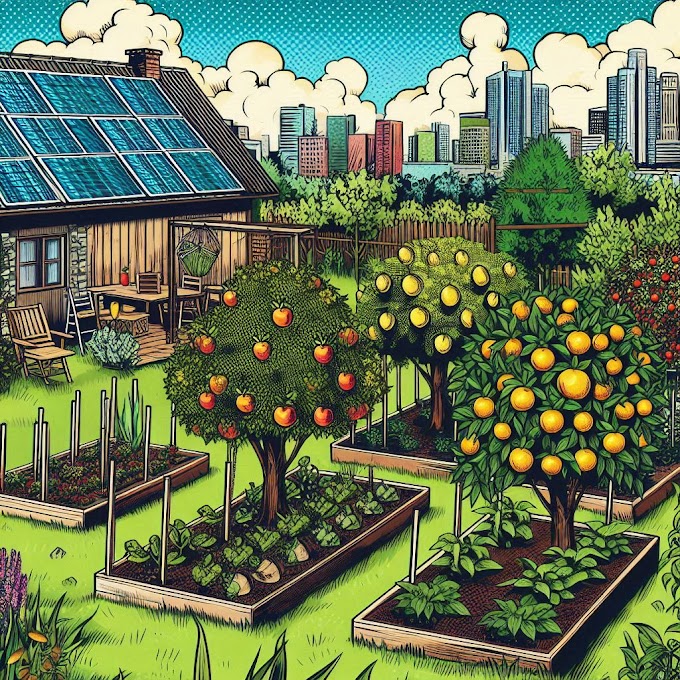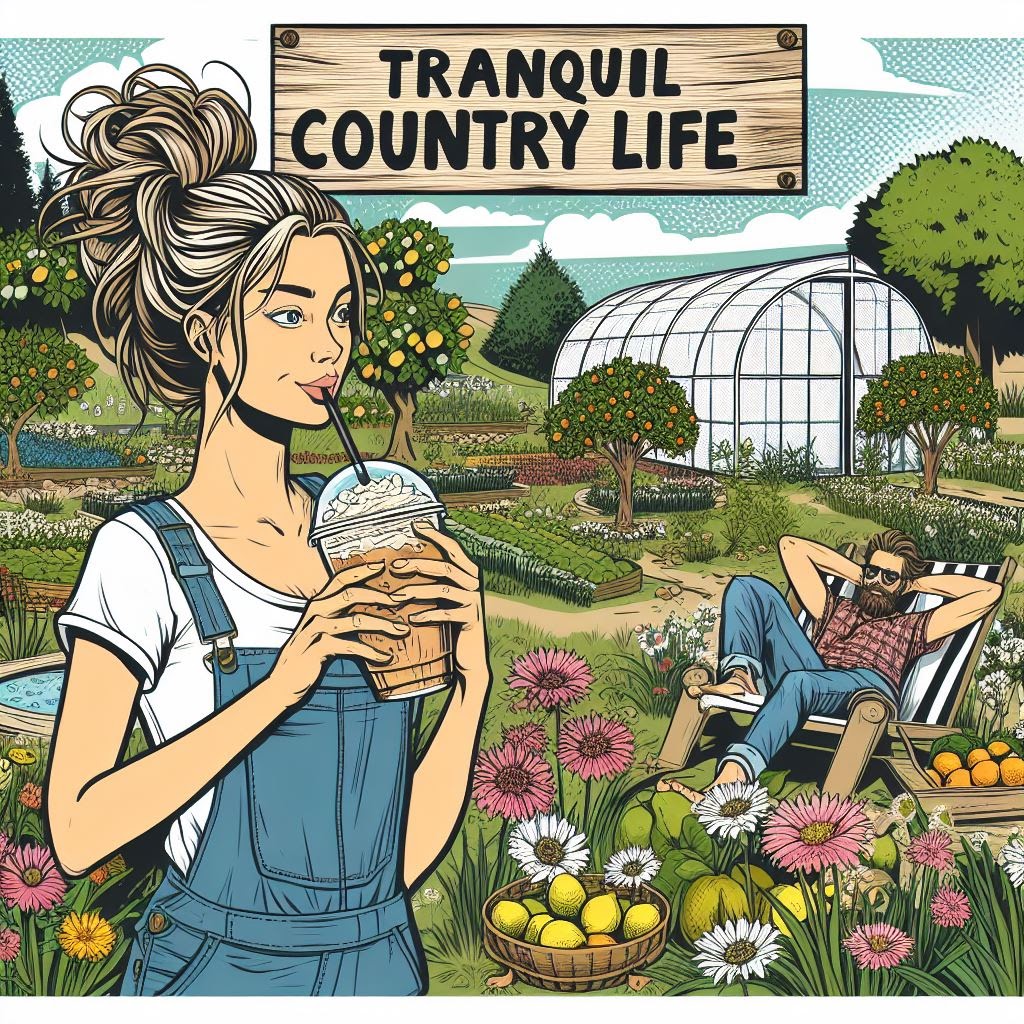Hydroponics 101: A Beginner’s Guide to Growing Without Soil
Hydroponics is a revolutionary method of growing plants without soil, using water-based, nutrient-rich solutions. This innovative system has become increasingly popular for those looking to grow food in limited spaces, like apartments or small survival gardens.
Whether you're aiming for self-sufficiency or simply want to experiment with growing your own food, hydroponics offers a sustainable, efficient, and space-saving alternative to traditional gardening.
What is Hydroponics?
Hydroponics is the practice of growing plants with their roots submerged in a water-based nutrient solution rather than soil.
This method allows plants to receive all the essential nutrients they need for growth in a controlled environment.
Hydroponic systems can be set up indoors or outdoors, making it ideal for areas with poor soil quality or where space is limited.
Why Choose Hydroponics?
1. Water Efficiency:
Hydroponic systems use up to 90% less water than traditional soil-based gardening, making them perfect for areas where water is scarce.
2. Faster Growth:
Plants in hydroponic systems can grow up to 50% faster than those grown in soil. This is because the nutrients are delivered directly to the roots, promoting more efficient uptake.
3. Space Saving:
Since hydroponics doesn’t require soil, it can be implemented in smaller spaces, such as on countertops, windowsills, or even in small rooms, making it ideal for urban gardening or survival gardens.
4. Less Need for Pesticides:
With hydroponics, there is typically less risk of soil-borne pests and diseases, which means fewer chemicals are needed, resulting in healthier plants.
5. Year-Round Gardening:
Hydroponics allows you to grow plants year-round, independent of seasonal changes. This is especially useful in colder climates or areas where growing seasons are short.
How Does Hydroponics Work?
In a hydroponic system, the key components are:
Water: The plants’ roots are submerged in a water-based solution that contains all the essential nutrients.
Nutrients: A carefully formulated mix of essential minerals like nitrogen, potassium, phosphorus, calcium, and magnesium, which the plants need to grow.
Light: Since plants still need light for photosynthesis, hydroponic systems often use artificial grow lights indoors, or they can be placed in a sunny location.
Air: Plants need oxygen, so it’s important to provide aeration to the water through pumps or air stones.
Different Types of Hydroponic Systems
There are several types of hydroponic systems, each with its advantages:
1. Wick System
This is the simplest form of hydroponics. It uses a wick to draw the nutrient solution from a reservoir into the growing medium, where plant roots are located. While easy to set up, it’s better suited for small, low-maintenance plants.
2. Deep Water Culture (DWC)
In this system, plant roots are submerged directly in the nutrient solution. Air pumps are used to oxygenate the water. DWC is a highly efficient system and perfect for fast-growing plants like lettuce and herbs.
3. Nutrient Film Technique (NFT)
A thin film of nutrient solution continuously flows over the roots of the plants in this system. NFT is ideal for plants with shallow roots, like leafy greens.
4. Ebb and Flow (Flood and Drain)
This system works by flooding the grow bed with nutrient solution, then draining it back into the reservoir. It’s a versatile system that works well with a variety of plants, including those with deeper roots.
5. Aeroponics
Aeroponics suspends the plant roots in the air and misting them with a nutrient solution. This system uses no growing medium and is incredibly efficient in terms of water and nutrient delivery.
What to Grow in Hydroponics
Hydroponics is great for growing a variety of plants, especially leafy greens and herbs. Some common crops to grow include:
Lettuce: Lettuce is quick-growing and thrives in hydroponic systems.
Spinach: Another leafy green that does well in hydroponics, especially in a DWC or NFT system.
Tomatoes: With proper care and space, tomatoes can flourish in hydroponic systems.
Herbs: Basil, mint, cilantro, and parsley are all ideal for hydroponic growth.
Peppers: Peppers also adapt well to hydroponic systems, though they may require more space and care.
While almost any plant can be grown hydroponically with the right setup, root vegetables like carrots and potatoes are not ideal because they require a lot of space to grow, and their roots need more room than hydroponic systems typically offer.
How to Set Up a Simple Hydroponic System
1. Choose Your Hydroponic System:
Pick a system that suits your space, plant type, and experience level. For beginners, the wick system or Deep Water Culture (DWC) are easy to start with.
2. Set Up the Growing Tray:
You'll need a shallow container or tray to hold your growing medium (like coconut coir or perlite) or your plants (if using DWC).
3. Install the Pump (if needed):
Some systems, like the DWC or NFT, require pumps to circulate the nutrient solution. For a wick system, no pump is needed.
4. Mix Your Nutrient Solution:
Use hydroponic nutrients (available at garden supply stores or online) and mix them with water according to the manufacturer’s instructions. pH levels should be checked regularly to ensure the solution stays within the optimal range (5.5 to 6.5) for most plants.
5. Add Plants:
Place seedlings or seeds into your growing medium, ensuring that the roots are able to access the nutrient solution. If you’re using a DWC or other systems where the plants sit in water, make sure they’re securely placed.
6. Provide Light:
If you’re growing indoors, you’ll need to provide light for your plants. LED grow lights are energy-efficient and work well for hydroponics.
7. Monitor and Maintain the System:
Check water levels, nutrient strength, pH, and air circulation regularly. Also, keep an eye on the plants for signs of pests or disease.
Growing Tips for Hydroponics
Choose the Right Plants:
Some plants are more suited to hydroponics than others. Stick to leafy greens, herbs, and compact vegetables for the best results.
Proper Lighting:
Ensure your plants receive 12-16 hours of light per day. If growing indoors, use full-spectrum LED grow lights to mimic natural sunlight.
Monitor Water and Nutrients:
Hydroponic plants are highly sensitive to water and nutrient imbalances. Regularly check the pH and nutrient solution and adjust as needed.
Maintain Airflow:
Good aeration is key to healthy root development. Use air pumps or air stones in your system to keep the water oxygenated.
Start Small:
If you’re new to hydroponics, start with a small system and a few easy-to-grow plants. As you gain experience, you can scale up.
Benefits of Hydroponics
1. Water Conservation:
Hydroponics uses less water than traditional gardening. The water is recycled in a closed system, reducing waste.
2. Faster Growth:
Without soil, plants get more nutrients directly, leading to faster growth cycles.
3. Increased Yield:
Hydroponic systems can produce higher yields per square foot compared to soil-based gardening.
4. Less Soil-Borne Pests:
Hydroponic systems are typically cleaner, and the risk of pests like aphids, nematodes, and fungi is lower.
5. Space Efficiency:
Hydroponics allows you to grow a lot of food in a small space, making it perfect for apartment dwellers or those with limited gardening space.
Hydroponics is an exciting, innovative method of growing food, offering numerous advantages such as faster plant growth, better water efficiency, and year-round gardening. Whether you're a seasoned gardener or a beginner, hydroponics provides a fantastic way to grow your own food in small spaces and with minimal resources.
With the right setup, you can enjoy fresh, homegrown produce at your fingertips—no soil required!












